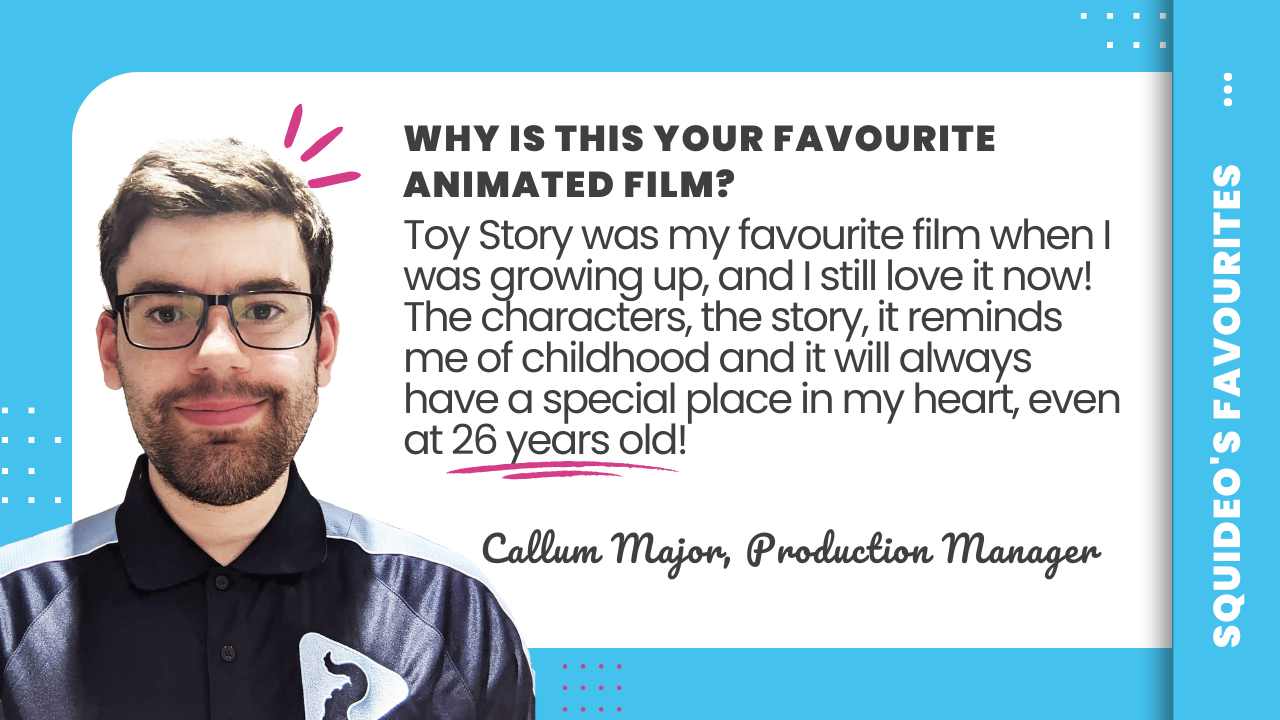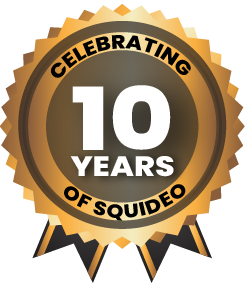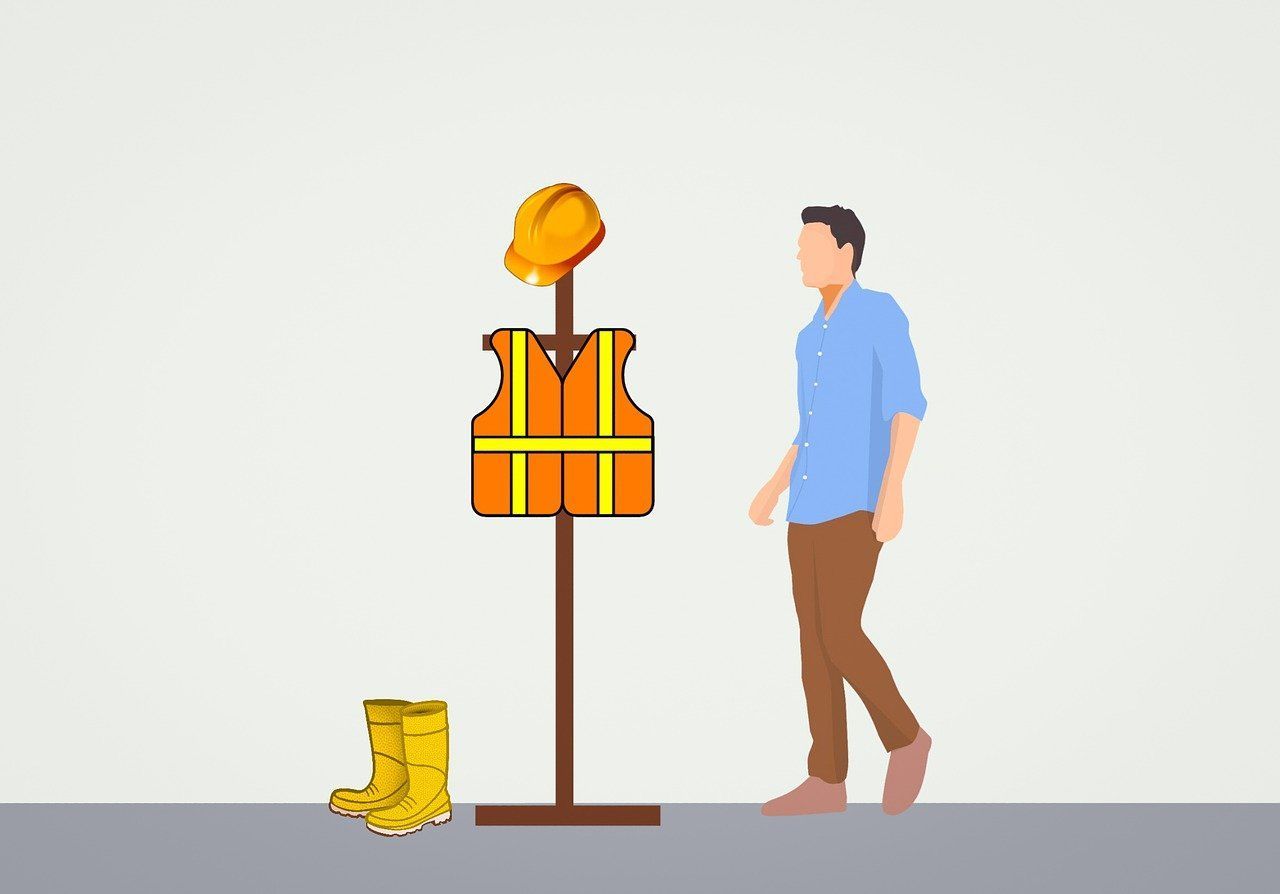Squideo’s Favourites: Toy Story
Pixar Animation Studios arrived with a bang when its first feature-length film, Toy Story, was released in 1995. What would follow was a franchise beloved by children, spawning multiple spin-offs, theme park rides, video games and merchandise. Nominated for 4 Academy Awards, Toy Story is now considered one of the best animated films of all time.
Toy Story is credited with opening up the world of 3D computer animated films, which still rules the industry to this day. With the sponsorship of Disney, Pixar used this technology to create a film that visually stood apart from everything else at the box office and helped complete Pixar’s journey from a small computer division at Lucasfilm to an award-winning studio that has produced some of the best animated films of the past thirty years.

We’re diving into the production behind this animated film, exploring the style and techniques which came together to create this compelling story. In the meantime, if you have an idea for an animated video of your own get in touch with the Squideo team.
Creating a Story
To any fan of animation, Buzz Lightyear and Woody are well-known characters. Yet without Tinny, who reached nowhere near as much fame, they may never have graced our screens.
Pixar Animation Studios had produced a number of animated shorts before it ventured into feature length production, starting with Luxo Jr. (which introduced Pixar’s mascot). Red’s Dream followed, but it was Tin Toy (1988) that caught Disney’s attention. Financed by Steve Jobs who bought Pixar in 1986, Tin Toy was a five-minute short created and directed by John Lasseter. Seen through the perspective of a toy running away from a destructive infant, Tin Toy laid down the groundwork for Toy Story – another Lasseter creation.
Disney had only recently allowed films to be made outside its own production company, starting with Tim Burton’s Nightmare Before Christmas (1993).
In a 2011 interview with Entertainment Weekly, [John Lasseter] said: "Disney kept trying to hire me back after each of the short films I had made. I kept saying, 'Let me make a film for you up here'.” They always said, 'No, a Disney animated film will always be made at Disney.' They had no interest in doing an outside project." Lasseter continued: "What changed their mind was Tim Burton. Tim and I went to college together, and he had developed a feature idea called 'The Nightmare Before Christmas.' He went on to become a successful live-action director and was trying to buy 'Nightmare' back from Disney. And they said, 'Why don’t you just make it for us?' That opened the door for Disney to think of these niche animated films that could be done. They said, 'Okay, we’re willing to talk with you. We’ve got puppet animation going [with Tim Burton] and now we’ll be willing to develop the computer animation.' They said to come back when we had an idea. So we started thinking…"
3D computer animation developed alongside CGI in the 1970s, but a fully created computer animation television show or film didn’t debut until the 1990s. Yet animation companies, including Disney, had already played with the new technology before then. The Great Mouse Detective (1988) was the first Disney film to extensively use CGI: creating a two-minute sequence which was heavily promoted in the film’s marketing.
Their CGI was developed in cooperation with Pixar, the two companies coming together to make CAPS, the Computer Animation Production System which was relied upon heavily during the Disney Renaissance.
The technology was new, which put giant animation studios at a disadvantage. Their artists were trained in 2D animation techniques, leaving a void for computer companies who had the expertise to utilise this new technology.

Animation Style
The use of this new technology resulted in a film that looked vastly different from everything that predated it. Not only did 3D computer animation provide greater realism, but the independence of these early animators also meant they were not constrained by an existing “style” favoured by a company.
To this day, animated characters start life at Disney as 2D concept drawings which influences the style once it is converted to 3D. Pixar on the other hand is at home in that format, and their animators create greater complexities and detailed textures in their work.
“There are differences between Pixar and Disney. If you reduced Pixar to a phrase it would be: ‘Wouldn’t it be cool if?’ Like if a kid was looking at their toy: What if the toy could talk? All their films are like this. If you reduced the Disney films it would be: ‘Once upon a time…’.”

The filmmakers designed the minor characters using memories of their childhood toys, but the two leads were a different story. Woody and Buzz Lightyear went through several redesigns, along with the addition and removal of multiple human characters. Thankfully, Disney brought Joss Whedon onboard as a co-writer after reviewing the initial drafts. Now best known for directing and writing The Avengers (2012), Firefly (2002) and Buffy the Vampire Slayer (1997-2003), Toy Story was his first hit for which Whedon shared an Academy Award for Best Original Screenplay.
Because 3D computer animation was so new, even the lead actors didn’t know what the film would look like. Tom Hanks, who voiced Woody, said: “The shading and the light and its starting to look crisp and clean it looks surreal and real, it had a really neat 3-D quality to it without that fuzzy eyeball stuff.”
While Tim Allen, who voiced Buzz Lightyear, said: “When I first saw it I thought, 'I don't know if kids are gonna buy this, adults especially not, it's too high tech, it looks too much like a video game. And they got the second generation, third generation, it started looking slicker and slicker and then they finally finished with a shot of the soldiers going 'one, two, three, let's go!' and they went down the rope, wow! What a view!”
Pixar’s software was key to the animation of Toy Story. From RenderMan to Menv, the latter of which has since been replaced at Pixar by Presto, it took over 400 computer models to make the film. And it was worth every second of development. Toy Story showed the world that – not only was Pixar the new kid on the animation block – but that they also held the key to the future of animated film.
Get Started With Your Video
Inspired to create a unique animated video of your own? Watch the video below to get a better understanding of how Squideo can help promote your business, then get in touch with us to find out more!













